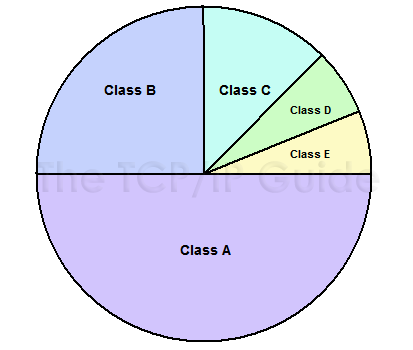 |
|
Please Whitelist This Site?
I know everyone hates ads. But please understand that I am providing premium content for free that takes hundreds of hours of time to research and write. I don't want to go to a pay-only model like some sites, but when more and more people block ads, I end up working for free. And I have a family to support, just like you. :)
If you like The TCP/IP Guide, please consider the download version. It's priced very economically and you can read all of it in a convenient format without ads.
If you want to use this site for free, I'd be grateful if you could add the site to the whitelist for Adblock. To do so, just open the Adblock menu and select "Disable on tcpipguide.com". Or go to the Tools menu and select "Adblock Plus Preferences...". Then click "Add Filter..." at the bottom, and add this string: "@@||tcpipguide.com^$document". Then just click OK.
Thanks for your understanding!
Sincerely, Charles Kozierok
Author and Publisher, The TCP/IP Guide
|
|
|

Custom Search
|
|
IP "Classful" Addressing Overview and Address Classes
(Page 1 of 2)
When the first precursor of the Internet was developed, some of the requirements of the internetwork, both present and future, were quickly realized. The Internet would start small but eventually grow. It would be shared by many organizations. Since it is necessary for all IP addresses on the internetwork to be unique, a system had to be created for dividing up the available addresses and share them amongst those organizations. A central authority had to be established for this purpose, and a scheme developed for it to effectively allocate addresses.
The developers of IP recognized that organizations come in different sizes and would therefore need varying numbers of IP addresses on the Internet. They devised a system whereby the IP address space would be divided into classes, each of which contained a portion of the total addresses and were dedicated to specific uses. Some would be devoted to large networks on the Internet, while others would be for smaller organizations, and still others reserved for special purposes.
Since this was the original system, it had no name; it was just “the” IP addressing system. Today, in reference to its use of classes, it is called the “classful” addressing scheme, to differentiate it from the newer classless scheme. As I said at the end of the introduction to this section, “classful” isn't really a word, but it's what everyone uses.
There are five classes in the “classful” system, which are given letters A through E. Table 43 provides some general information about the classes, their intended uses and other general characteristics about them:
IP Address Class |
Fraction of Total IP Address Space |
Number Of Network ID Bits |
Number Of Host ID Bits |
Intended Use |
Class A |
1/2 |
8 |
24 |
Unicast addressing for very large organizations with hundreds of thousands or millions of hosts to connect to the Internet. |
Class B |
1/4 |
16 |
16 |
Unicast addressing for medium-to-large organizations with many hundreds to thousands of hosts to connect to the Internet. |
Class C |
1/8 |
24 |
8 |
Unicast addressing for smaller organizations with no more than about 250 hosts to connect to the Internet. |
Class D |
1/16 |
n/a |
n/a |
IP multicasting. |
Class E |
1/16 |
n/a |
n/a |
Reserved for “experimental use”. |
Looking at this table (and at Figure 60) you can see that the first three, classes A, B and C, comprise most of the total address space (7/8ths of it). These are the classes used for unicast IP addressing, which means for messages sent to a single network interface. (The blocks also include associated broadcast addresses for these networks.) This is what we usually consider “normal” IP addressing. You can think of classes A, B and C as the “papa bear”, “mama bear” and “baby bear” of traditional IP addressing. They allow the Internet to provide addressing for a small number of very large networks, a moderate number of medium-sized organizations, and a large number of smaller companies. This approximately reflects the distribution of organization sizes, approximately, in the real world, though the large gulf in the maximum number of hosts allowed for each address class leads to inflexibility and problems.
As you can see, the classes differ in the place where the “dividing line” is drawn between the network ID and the host ID portions of the addresses they contain. However, in each case the division is made on octet boundaries: in classful addressing, the division does not occur within an octet.
|
Classes D and E are special—to the point where many people don't even realize they exist. Class D is used for IP multicasting, while class E was reserved for “experimental use”. I discuss IP multicast addressing later in this section.
|
| |||||||||||||||||||
Home - Table Of Contents - Contact Us
The TCP/IP Guide (http://www.TCPIPGuide.com)
Version 3.0 - Version Date: September 20, 2005
© Copyright 2001-2005 Charles M. Kozierok. All Rights Reserved.
Not responsible for any loss resulting from the use of this site.







